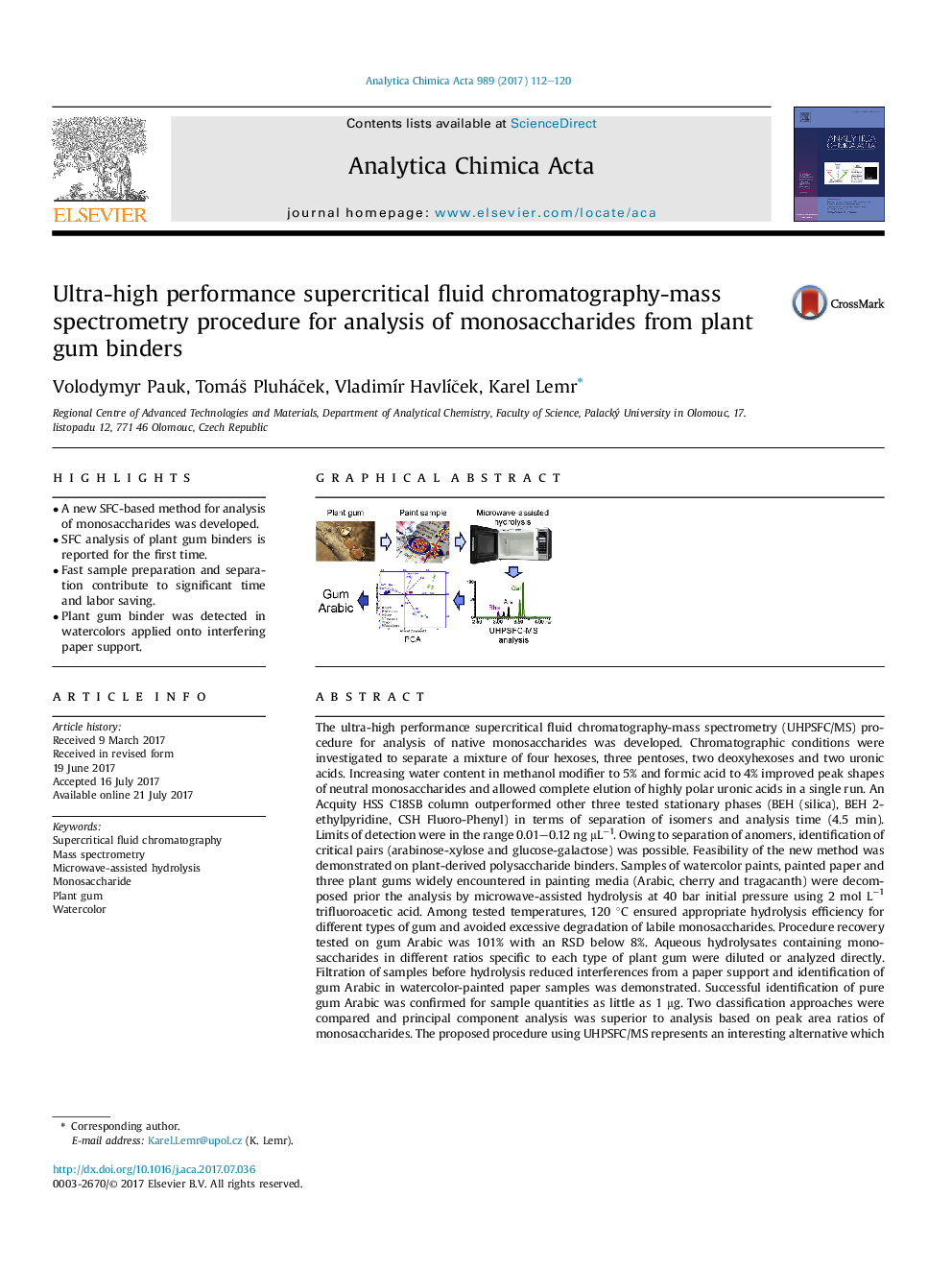| Article ID | Journal | Published Year | Pages | File Type |
|---|---|---|---|---|
| 5130705 | Analytica Chimica Acta | 2017 | 9 Pages |
â¢A new SFC-based method for analysis of monosaccharides was developed.â¢SFC analysis of plant gum binders is reported for the first time.â¢Fast sample preparation and separation contribute to significant time and labor saving.â¢Plant gum binder was detected in watercolors applied onto interfering paper support.
The ultra-high performance supercritical fluid chromatography-mass spectrometry (UHPSFC/MS) procedure for analysis of native monosaccharides was developed. Chromatographic conditions were investigated to separate a mixture of four hexoses, three pentoses, two deoxyhexoses and two uronic acids. Increasing water content in methanol modifier to 5% and formic acid to 4% improved peak shapes of neutral monosaccharides and allowed complete elution of highly polar uronic acids in a single run. An Acquity HSS C18SB column outperformed other three tested stationary phases (BEH (silica), BEH 2-ethylpyridine, CSH Fluoro-Phenyl) in terms of separation of isomers and analysis time (4.5 min). Limits of detection were in the range 0.01-0.12 ng μLâ1. Owing to separation of anomers, identification of critical pairs (arabinose-xylose and glucose-galactose) was possible. Feasibility of the new method was demonstrated on plant-derived polysaccharide binders. Samples of watercolor paints, painted paper and three plant gums widely encountered in painting media (Arabic, cherry and tragacanth) were decomposed prior the analysis by microwave-assisted hydrolysis at 40 bar initial pressure using 2 mol Lâ1 trifluoroacetic acid. Among tested temperatures, 120 °C ensured appropriate hydrolysis efficiency for different types of gum and avoided excessive degradation of labile monosaccharides. Procedure recovery tested on gum Arabic was 101% with an RSD below 8%. Aqueous hydrolysates containing monosaccharides in different ratios specific to each type of plant gum were diluted or analyzed directly. Filtration of samples before hydrolysis reduced interferences from a paper support and identification of gum Arabic in watercolor-painted paper samples was demonstrated. Successful identification of pure gum Arabic was confirmed for sample quantities as little as 1 μg. Two classification approaches were compared and principal component analysis was superior to analysis based on peak area ratios of monosaccharides. The proposed procedure using UHPSFC/MS represents an interesting alternative which can compete with other chromatographic methods in the field of saccharide analysis in terms of speed, sensitivity and simplicity of workflow.
Graphical abstractDownload high-res image (305KB)Download full-size image
